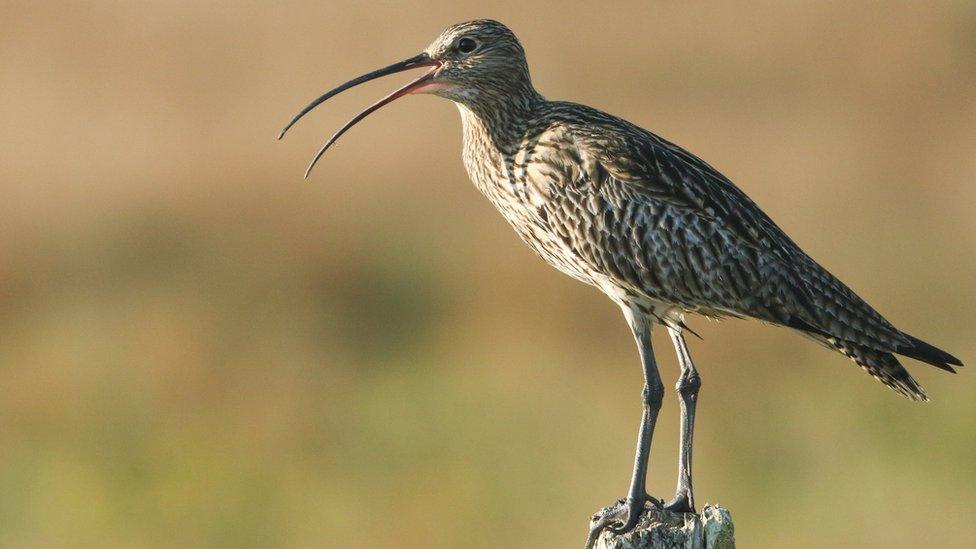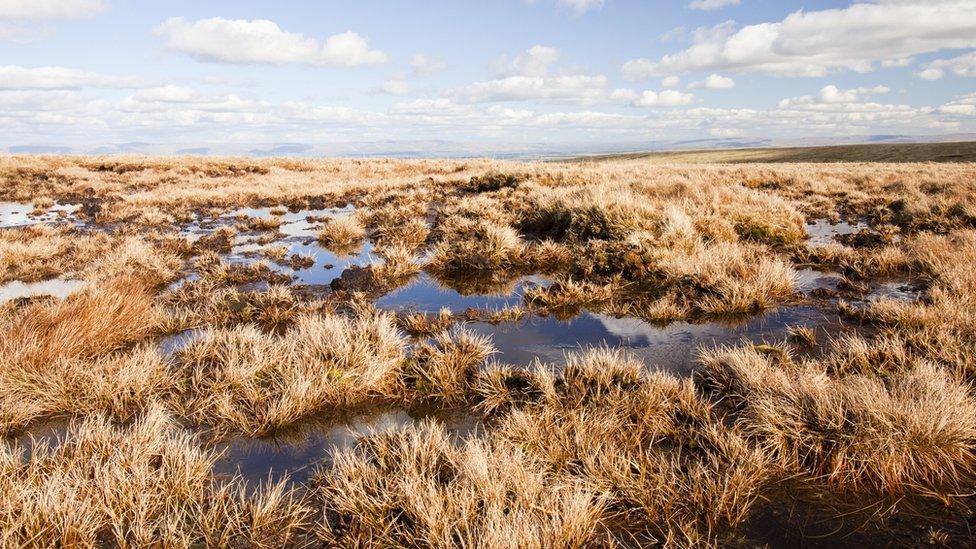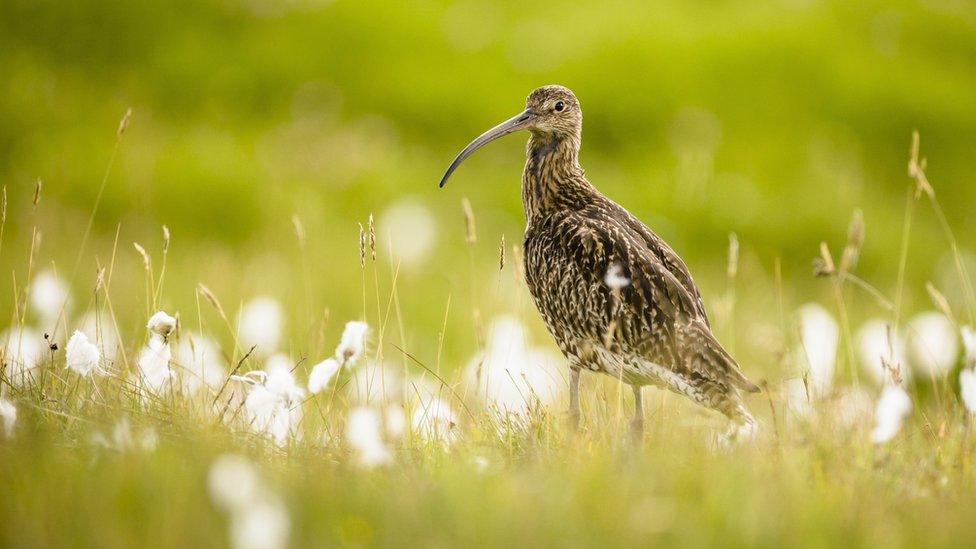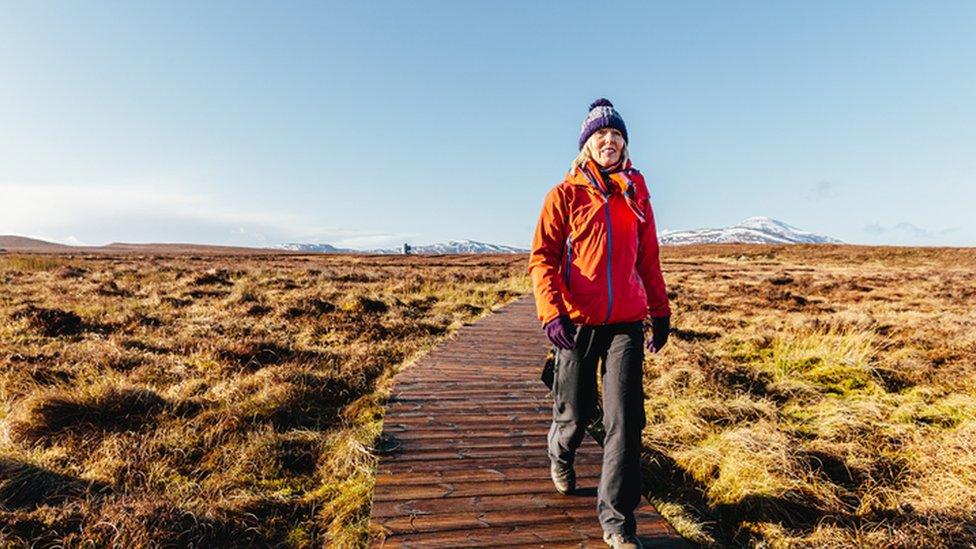What are peatlands and why do we need to protect them?
- Published

Peatlands provide a safe habitat for curlews in Wales
The Welsh government has announced it will triple its efforts to restore and protect the country's peatlands.
Peatlands are very important because they provide a habitat for many different plants, insects and birds. They also absorb and store carbon dioxide - a major cause of climate change.
Peat is a special type of mud that forms when plants die and break down, but peatlands have been damaged and destroyed across the world.
Many have been dug up to provide space for farming animals and crops or to build houses. Many peatlands have been damaged by pollution and peat has also been removed and burned as a fuel.

You can find peat all over the UK, especially in Scotland and Wales
What are peatlands?
Peatlands are areas of land made up of peat - which is a bit like mud - but it's made of partially decomposed plants.
Because peatlands hold a lot of water, plants cannot fully break down so it creates a nutrient-rich area, where lots of wildlife thrive.
In fact, peat has been dug up and sold as part of planting soil because of the great growing conditions it provides - great for gardeners, but not great for the peatlands or the wildlife that rely on it.

Conservationists are worried about the low number of curlews in Wales
A diverse ecosystem
Peatlands are home to a huge number of different types of plants, animals, and insects.
In Wales the peatlands provide a great home for curlews - but conservationists are worried that the number of curlews in the country is going down.
As well as a place for animals to thrive, The Wildlife Trust charity says peatlands can be used to filter water and even reduce flooding by holding water.

The Wildlife Trust recommends people use "peat free" soil for their gardens - to reduce the amount of peat being dug up
Why do they need protecting?
Peatlands store a huge amount of carbon - which is essential for plants and animals to survive.
The Wildlife Trust says there's around 3.2 million tonnes of carbon in UK peatlands.
By storing carbon, the peat bogs can reduce the amount of carbon dioxide going into our atmosphere - which is a huge contributor to global warming.
Because of its nutrient-rich soil, lots of peatlands have been dug up so people can use the peat for farming and planting.

You might have seen these walkways in the countryside - they're put over peat bogs to keep the wildlife safe, and so you can walk without getting soggy or damaging the precious peatlands
Peat takes a long time to form - around 1,000 years per metre - so conservationists are asking governments in the UK to protect the peatlands that we already have.
What is the Welsh government doing?
In Wales, the government says it will triple its efforts to look after the Welsh peatlands.
It says it will try to restore the country's current peatlands to help look after local wildlife and plants.
This can be done through careful restoration methods, such as making sure enough water is getting into the peat.

Peat restoration has already taken place in the Peak District, in England
The government say its plan is to restore 600-800 hectares of public and private land a year between 2020 and 2025.
But it's a big job - the leader of the restoration project says around 90% of Wales' peatlands are damaged or in a poor condition.
The project hopes to improve biodiversity - the ability for a wide range of plants and animals to thrive in an area - for the whole of Wales.
